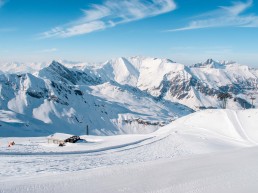There really is something quite incredible about the fact that you can drive for less than 5 hours from London and find yourself in this beautiful corner of the UK. Even if you’re further afield, it’s still worth the trip for the stunning views, challenging hikes and crisp, clear lakes. We tend to look further afield for our adventures, almost believing the further we get away from home, the more incredible our trip will be. Whilst that is sometimes the case, Snowdonia really does prove that there is some incredible beauty right here on your doorstep. Read on for our guide to climbing Snowdon.
There are many routes up to the highest peak in Wales all varying in difficulty, start point, length and popularity. One of the most popular routes is to take the Pyg track up and the Miners track back down. Although it is considered one of the easier routes, it’s still no walk in the park and will take 2-3 hours depending on your fitness level and how frequently you stop.

4.5
Hours from London
3560
Feet at the peak
7
Mile hike
The car park at Pen-y-pass (LL55 4NY) is very small and you will be hard pushed to get a spot unless you are an eager beaver and arrive really early. If you’re lucky and get a spot it’ll cost you £10 for the day. If you’re not so lucky (or prefer a lay-in), then you’ll need to park at the bottom of the hill along the side of the road which will cost you £4 for the day (make sure you park in the designated area or you’ll get a £70 fine!). You can walk from here back up to the car park or even get a taxi up if you’re not too keen on a 40 minute walk to the starting point.
The car park itself has a cafe and toilets which can be pretty handy as you won’t come across anything until you’re at the summit. The path is clearly signposted from the carpark making for an easy start and is quite easy to follow throughout.
The hike itself is challenging in parts, but is achievable by most with a moderate fitness level. As with most activities however, the fitter you are, the more you can enjoy it! At points you will be walking on rocky ground and every now and again you’ll be getting really stuck in scrambling over rocks, some of which will be wet. For this reason, I recommend a good, solid pair of walking boots that support your ankles as slipping over will not be good for your ego or your butt. Don’t be that guy or gal going up in the most inappropriate clothes and footwear going!

Reaching the summit
On a clear day you will see for miles as you climb higher and higher up towards the 3,560ft peak. You’ll be walking high above large, deep blue lakes and will feel like you’re a million miles from home. However, it is Wales after all, so even if the day starts with clear skies and sunshine, don’t be surprised if it clouds over suddenly. It’s also highly advisable to take a raincoat no matter what the weather seems to be doing at the bottom. As with any mountain, the weather can change in a flash and it’s always better to be prepared. Keep an eye on the weather and be open to turning back if it begins to chuck it down.
It tends to get busier as you get closer to the top and you may even find that there may be a traffic jam in places. Another benefit of getting up early – you miss all of the traffic! Once you reach the top, find your way up the steps to the summit and get that obligatory selfie. The views here on a clear day are absolutely beautiful and make the climb completely worth it.


If you’re feeling like you need a re-charge you’re in luck as there is a cafe at the top selling everything from hot drinks to welsh stews and cakes. Don’t expect great coffee here – if you’re a coffee lover like me, you’ll be drinking it for a hot caffeine boost and nothing else. There is also a train that you can get down but it will cost you £22 one way. {Note: Cafe is open when the train is running between mid May and end of October, but not in bad weather}.
Everything you’ll need for your hike:
- Small - medium backpack
- Hiking boots with ankle support
- Good hiking socks + 1 spare
- Leggings/hiking trousers
- Layers (it is a few degrees cooler at the summit and weather changes quickly)
- Waterproof jacket
- Water bottle and snacks
- Camera
- Sunglasses
- Suncream
- Small first aid kit including blister plasters
Note: A map and compass is recommended but not essential as the routes are fairly easy to follow. If the weather changes and visibility becomes a problem, you may need them to find your way back. I have climbed twice (May and July) and not needed them but weather has been dry.
All in all, it’s a brilliant route that is accessible to beginner and experienced hikers alike. The fitter you are and the earlier you are, the better!
Happy adventuring,
Lorna
Share

Related posts
Skiing in Mayrhofen, Austria: A resort review
With the rain slashing against the airplane window it was clear that we had arrived back in…
Climbing Half Dome in Yosemite National Park
Deep in Yosemite Valley lies Half Dome, the huge rock formation that frequents many a macbook…



